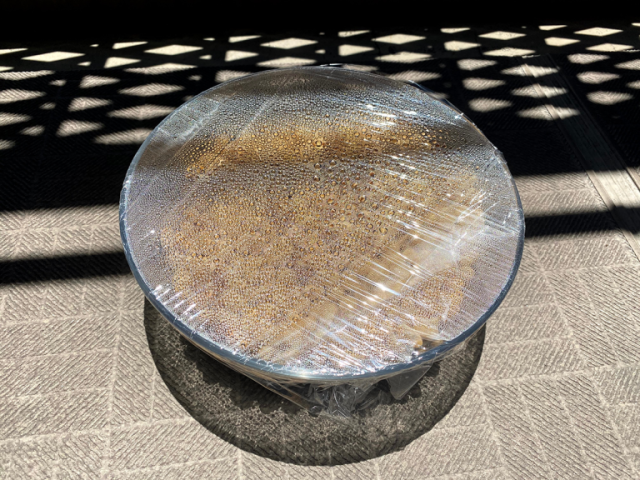
We try a way to stretch our store-bought natto supply, and also make the smelly, sticky dish less intimidating for newcomers.
Natto, fermented soybeans, are definitely a love-it-or-hate-it part of traditional Japanese cuisine. Even within Japan, people are sharply divided on whether it’s an integral part of a healthy breakfast, or an offensive-smelling dish they want neither on their table nor in their stomachs.
However, for those in the pro-natto camp, you might find yourself feeling sad as you approach the end of a pack. Fortunately, our Japanese-language reporter Kg recently figured out a way to easily bolster your natto supply, or ease your way into eating it if your palate is having trouble adjusting, with a new way to make your own natto at home…or, really, half-make it.
We say “half-make” because in order to follow Kg’s recipe, you’ll need not only soybeans, but also some already-made natto, of the kind you’d find at a Japanese supermarket. The process has three stages, and the first is preparing your soybeans.
Kg used 500 grams (17.6 ounces) of soybeans, and after placing them in a bowl, the next step is to cover them with water, then cover the bowl with plastic wrap.
Let the beans soak overnight, and the next day, they should be plump with the soaked up moisture, and you’ll be ready for phase two: cooking the beans.
Rinse the beans in a colander, then put them in a pressure cooker and cover them with water. Let them cook for about 25 minutes.
Once the cooking is done, remove the beans, rinse them off in a colander, and transfer them to a bowl for phase three: fermentation.
If you were making natto entirely from scratch, this is where you’d add in the bacteria for the fermentation. But instead, we’re going to stir in some pre-made natto.
There’s no specific amount of natto to add, but you want enough for the natto to thoroughly mix with your freshly-cooked soybeans, in order to transfer enough of the fermentation agents as you stir them together.
Once you’re done mixing, cover the bowl with plastic wrap, place it somewhere in the sunlight, and let it sit.
▼ Kg left his batch out from morning to evening.
And that’s all there is to it!
Though fans say it’s an integral part of the experience, natto’s sticky texture is one of the major hurdles that keeps some people from eating it. However, this sort of hybrid, half-home-made natto has less sticky substance surrounding the beans you cook yourself, which can make it more palatable to natto newbies.
▼ The difference is really noticeable if you separate the two bean sources from each other after the fermentation stage.
▼ Self-cooked added soybeans
▼ Store-bought natto soybeans
Even if you’re a natto veteran, though, this remixed version presents something both familiar and fresh, and having more ways to eat healthy is always nice.
Related: Takano Foods
Photos ©SoraNews24
● Want to hear about SoraNews24’s latest articles as soon as they’re published? Follow us on Facebook and Twitter!
[ Read in Japanese ]

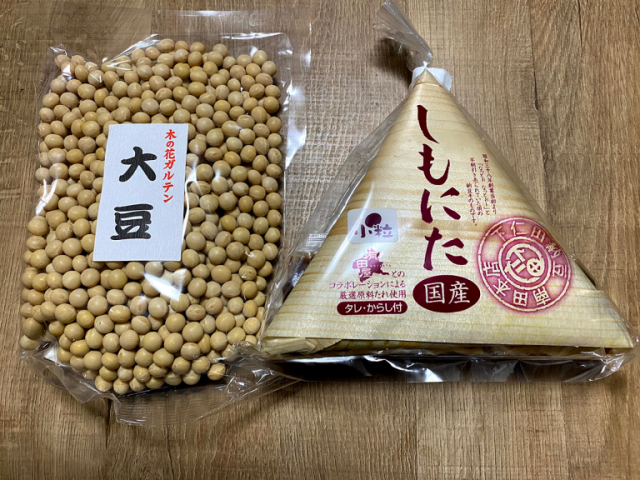
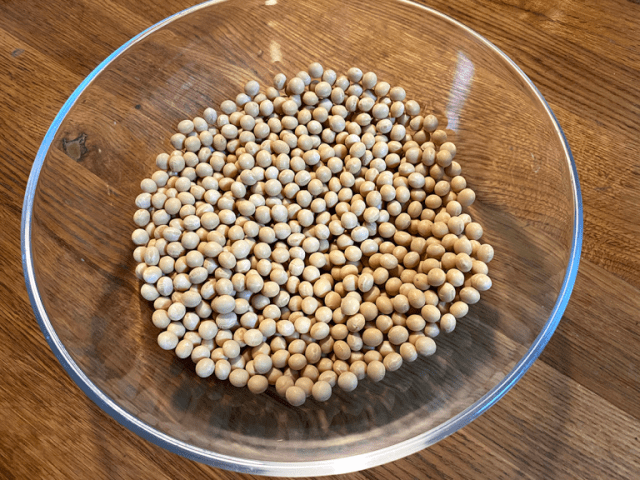
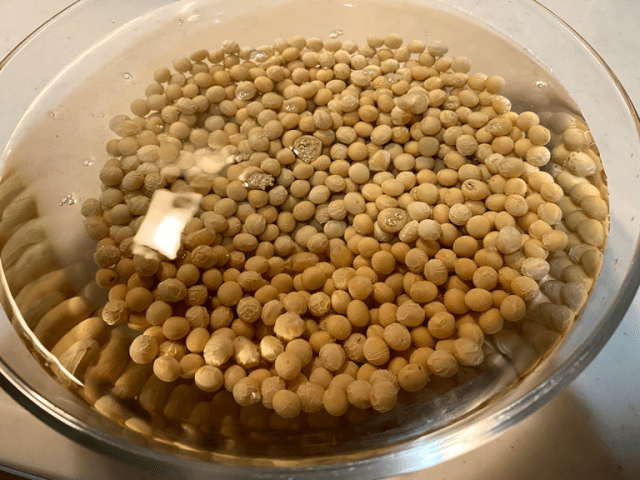
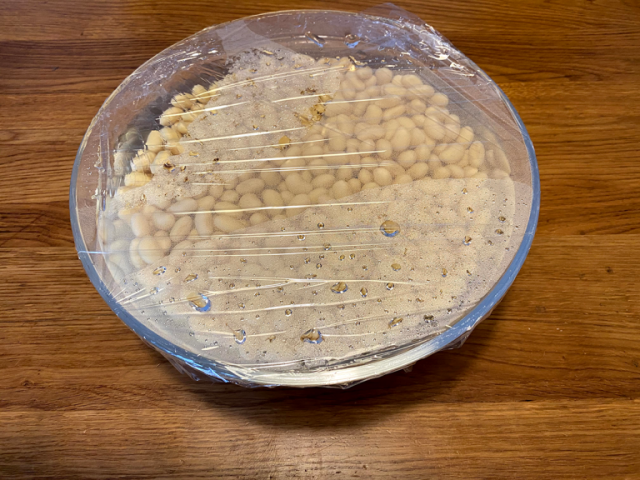
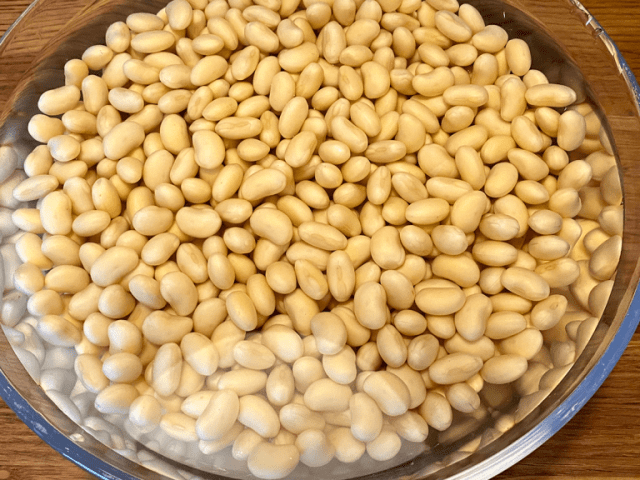
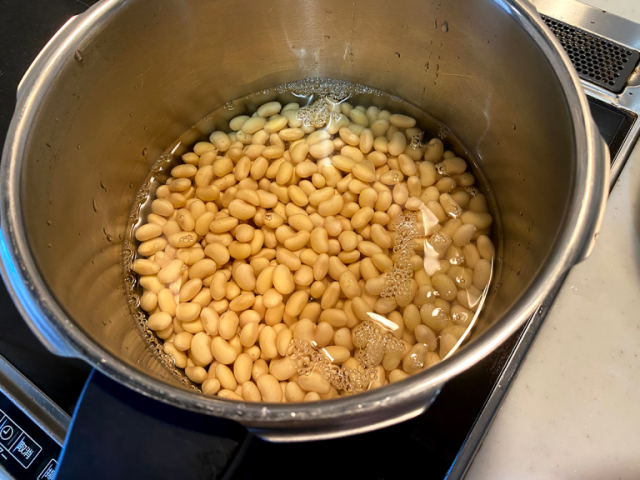
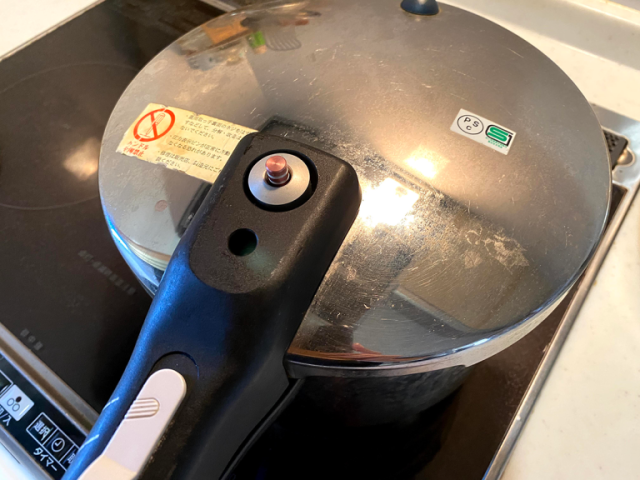
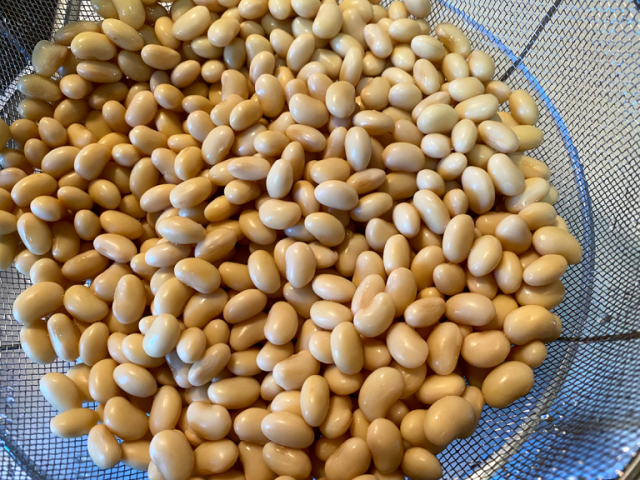
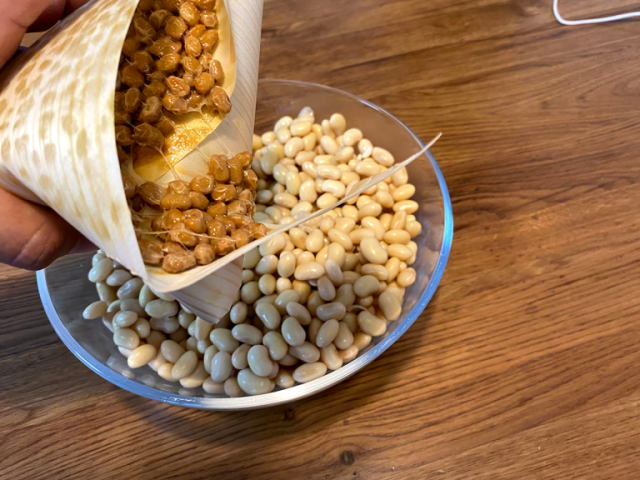

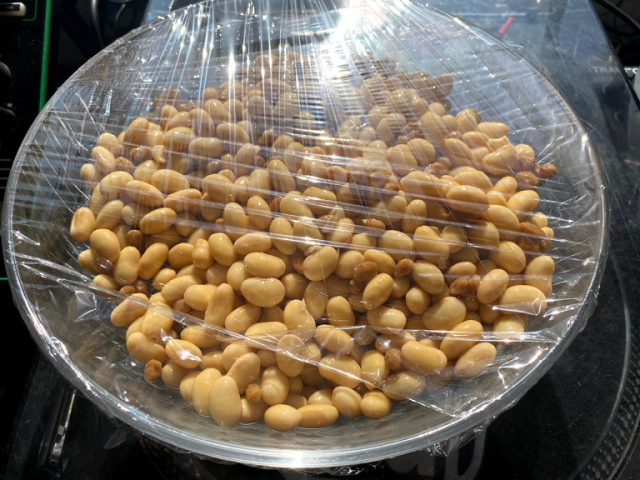
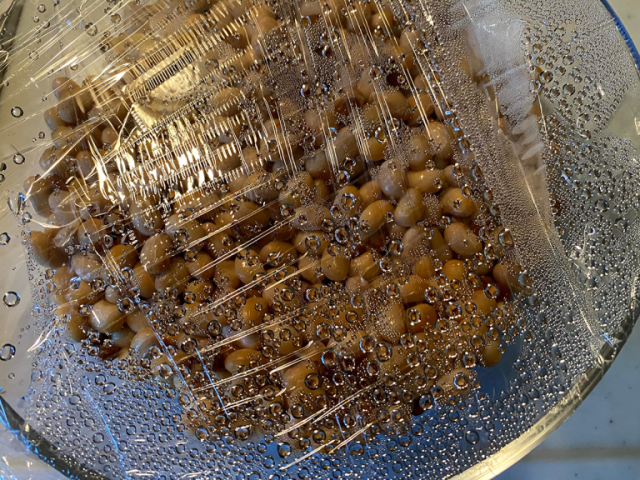
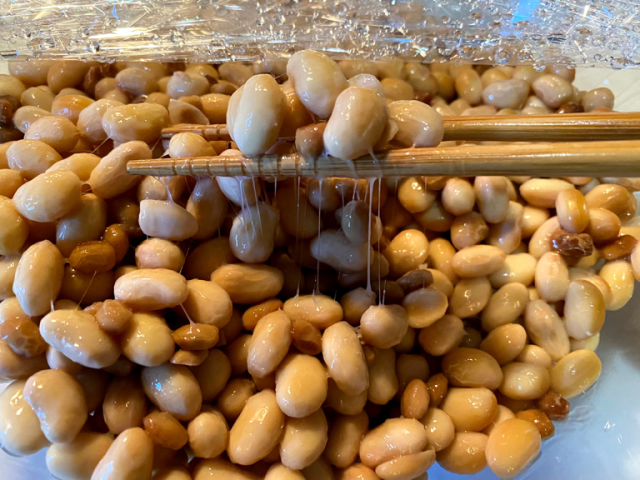
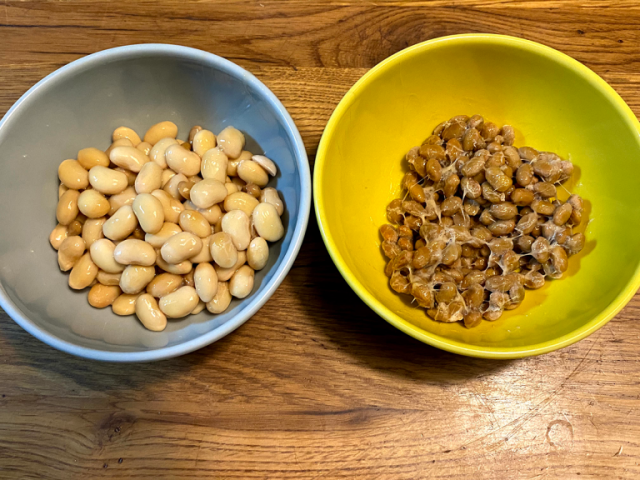
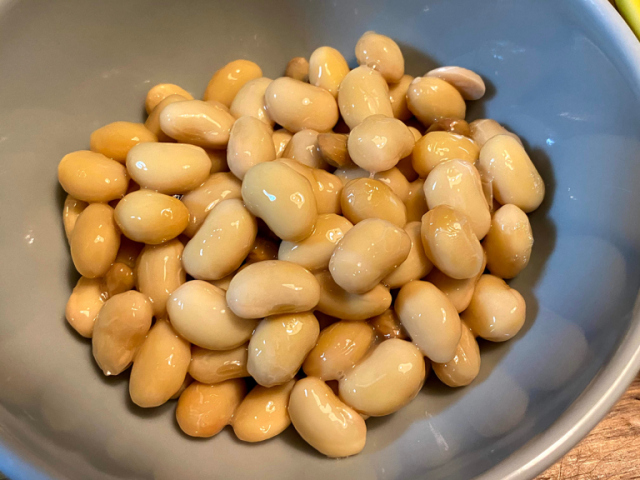

 We tried making natto the old-fashioned way, and the result was unexpected but delicious 【SoraKitchen】
We tried making natto the old-fashioned way, and the result was unexpected but delicious 【SoraKitchen】 All-You-Can-Eat Fermented Soybeans for $8.50! Choose From Eight Types of Natto!
All-You-Can-Eat Fermented Soybeans for $8.50! Choose From Eight Types of Natto! The surprising reason natto (fermented soybeans) are hard to swallow for many Japanese surfers
The surprising reason natto (fermented soybeans) are hard to swallow for many Japanese surfers Toast with fermented soybeans and honey may not be good-looking, but it is good eating
Toast with fermented soybeans and honey may not be good-looking, but it is good eating Could this be the secret to get Americans to actually like natto (Japanese fermented soy beans)?
Could this be the secret to get Americans to actually like natto (Japanese fermented soy beans)? Disillusionment at Tsukiji’s tourist-target prices led us to a great ramen restaurant in Tokyo
Disillusionment at Tsukiji’s tourist-target prices led us to a great ramen restaurant in Tokyo 7-Eleven Japan starts new temporary luggage storage service in over 300 branches
7-Eleven Japan starts new temporary luggage storage service in over 300 branches Ken Shimura remembered for his huge contribution to the game Rock, Paper, Scissors in Japan
Ken Shimura remembered for his huge contribution to the game Rock, Paper, Scissors in Japan Bando Taro proves family restaurants in Japan are on a whole other level
Bando Taro proves family restaurants in Japan are on a whole other level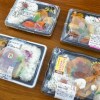 We taste makunouchi bento at four Japanese convenience store chains【Taste comparison】
We taste makunouchi bento at four Japanese convenience store chains【Taste comparison】 40 things our loveless reporter felt using Tinder in Japan
40 things our loveless reporter felt using Tinder in Japan Starbucks teams up with 166-year-old Kyoto doll maker for Year of the Horse decorations【Photos】
Starbucks teams up with 166-year-old Kyoto doll maker for Year of the Horse decorations【Photos】 More people in Japan quit sending New Year’s cards and many have started to regret it
More people in Japan quit sending New Year’s cards and many have started to regret it Japanese woman mistaken for bear
Japanese woman mistaken for bear We check out the new apartment building construction site area that opened in KidZania Tokyo
We check out the new apartment building construction site area that opened in KidZania Tokyo Tokyo’s Tsukiji sushi neighborhood asks tour groups to stay away for the rest of the month
Tokyo’s Tsukiji sushi neighborhood asks tour groups to stay away for the rest of the month Street Fighter Hadouken Churros to be launched and eaten in Tokyo, Okami pudding on offer too
Street Fighter Hadouken Churros to be launched and eaten in Tokyo, Okami pudding on offer too Japanese avoiding domestic travel as foreign tourists increase, possibly creating vicious cycle
Japanese avoiding domestic travel as foreign tourists increase, possibly creating vicious cycle Return of Totoro sequel short anime announced for Ghibli Park
Return of Totoro sequel short anime announced for Ghibli Park Is this the most relaxing Starbucks in Japan?
Is this the most relaxing Starbucks in Japan? Starbucks on a Shinkansen bullet train platform: 6 tips for using the automated store in Japan
Starbucks on a Shinkansen bullet train platform: 6 tips for using the automated store in Japan More Shinkansen trains being added to Japan’s “golden route” to meet traveler demand
More Shinkansen trains being added to Japan’s “golden route” to meet traveler demand Japan’s human washing machines will go on sale to general public, demos to be held in Tokyo
Japan’s human washing machines will go on sale to general public, demos to be held in Tokyo Starbucks Japan unveils new Christmas goods and a rhinestone tumbler that costs 19,500 yen
Starbucks Japan unveils new Christmas goods and a rhinestone tumbler that costs 19,500 yen Japanese train company is letting fans buy its actual ticket gates for their homes
Japanese train company is letting fans buy its actual ticket gates for their homes Is China’s don’t-go-to-Japan warning affecting tourist crowds in Tokyo’s Asakusa neighborhood?
Is China’s don’t-go-to-Japan warning affecting tourist crowds in Tokyo’s Asakusa neighborhood? The 10 best day trips from downtown Tokyo【Survey】
The 10 best day trips from downtown Tokyo【Survey】 Tokyo considering law requiring more trash cans following litter increase in heavily touristed area
Tokyo considering law requiring more trash cans following litter increase in heavily touristed area Nintendo’s Kirby now delivering orders at Kura Sushi restaurants, but not in Japan
Nintendo’s Kirby now delivering orders at Kura Sushi restaurants, but not in Japan Survey asks foreign tourists what bothered them in Japan, more than half gave same answer
Survey asks foreign tourists what bothered them in Japan, more than half gave same answer Japan’s deadliest food claims more victims, but why do people keep eating it for New Year’s?
Japan’s deadliest food claims more victims, but why do people keep eating it for New Year’s? We deeply regret going into this tunnel on our walk in the mountains of Japan
We deeply regret going into this tunnel on our walk in the mountains of Japan Studio Ghibli releases Kodama forest spirits from Princess Mononoke to light up your home
Studio Ghibli releases Kodama forest spirits from Princess Mononoke to light up your home Major Japanese hotel chain says reservations via overseas booking sites may not be valid
Major Japanese hotel chain says reservations via overseas booking sites may not be valid Put sesame oil in your coffee? Japanese maker says it’s the best way to start your day【Taste test】
Put sesame oil in your coffee? Japanese maker says it’s the best way to start your day【Taste test】 The top 10 annoying foreign tourist behaviors on trains, as chosen by Japanese people【Survey】
The top 10 annoying foreign tourist behaviors on trains, as chosen by Japanese people【Survey】 No more using real katana for tourism activities, Japan’s National Police Agency says
No more using real katana for tourism activities, Japan’s National Police Agency says Starbucks Japan reveals new sakura drinkware collection, inspired by evening cherry blossoms
Starbucks Japan reveals new sakura drinkware collection, inspired by evening cherry blossoms Japan’s first made-to-order natto store will make you fermented beans without the putrid smell
Japan’s first made-to-order natto store will make you fermented beans without the putrid smell We spice up our fermented soybeans with curry powder flavored natto【Taste Test】
We spice up our fermented soybeans with curry powder flavored natto【Taste Test】 We go looking for the best natto (fermented soybeans) in all of Japan【Taste test】
We go looking for the best natto (fermented soybeans) in all of Japan【Taste test】 Custard pudding with natto fermented soybeans? We try the new dessert craze sweeping Japan
Custard pudding with natto fermented soybeans? We try the new dessert craze sweeping Japan Pork Cutlets with Fermented Soybeans? All-You-Can-Eat Natto Part 2!
Pork Cutlets with Fermented Soybeans? All-You-Can-Eat Natto Part 2! How many times should you mix natto to make it more delicious?
How many times should you mix natto to make it more delicious? The most expensive natto in Japan – Eating the “black diamonds” of Tanba Kuro【Taste test】
The most expensive natto in Japan – Eating the “black diamonds” of Tanba Kuro【Taste test】 How to make cheese with just three ingredients【SoraKitchen】
How to make cheese with just three ingredients【SoraKitchen】 How to make no-rice “fried rice”【SoraKitchen】
How to make no-rice “fried rice”【SoraKitchen】 Our resident natto lover tries Mythical Natto from Hokkaido and gets spirited away【Taste test】
Our resident natto lover tries Mythical Natto from Hokkaido and gets spirited away【Taste test】 Making igisu, a traditional Japanese food even most Japanese people don’t know about【SoraKitchen】
Making igisu, a traditional Japanese food even most Japanese people don’t know about【SoraKitchen】 We try ice cream with a topping of natto fermented soybeans, because the Internet told us to
We try ice cream with a topping of natto fermented soybeans, because the Internet told us to Fermented soybean shaved ice pushes the envelope of summertime sweets
Fermented soybean shaved ice pushes the envelope of summertime sweets Natto-infused ramen is a thing — we tried it, we love it【Taste test】
Natto-infused ramen is a thing — we tried it, we love it【Taste test】 We learn how to make tofu with this at-home make-your-own tofu kit【SoraKitchen】
We learn how to make tofu with this at-home make-your-own tofu kit【SoraKitchen】 We head out to Kyoto to eat a delicious crepe crammed with fermented soybeans, rice【Taste Test】
We head out to Kyoto to eat a delicious crepe crammed with fermented soybeans, rice【Taste Test】
Leave a Reply